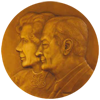
Jón Karlsson, professor of orthopedic surgery and sports Traumatology at the Sahlgrenska University Hospital. He develops methods for more effective rehabilitation after knee and achilles tendon injury. NOTE – This article is machine translated from Swedish.
He is a rare scientist — Microsoft blind but a master of that care about their patients and students. Jón K is launched which ended up in Gothenburg to devote his life to people’s leg injury.
— It’s important for me to always assign patients to what we do, they’re going to benefit from our research.
Jón’s morning was booked out with patients, he had time for lunch not included when needed his help and interview he already begins in the cell phone on his way to the meeting place — to take advantage of the time he’s sitting in the car. Get the feeling that it’s a typical day for the active Professor.
For more than a decade, Jón K working at Lundberg laboratory for orthopaedic research. Where to study, inter alia, damage to the knees and hälsenor.
— We are developing methods for rehabilitation of patients with these problems. It may also be about to correct time in children with congenital disability in the legs. We do many other things as well. A patient group, for example, young athletes as höftopererats.
The lab is open to all orthopaedic surgeons, and graduate students who want to do research on the musculoskeletal system.
The idea has been around since the beginning. Now when we merged two labs in the same premises, it has become even better, “he says and stresses the importance of working together to achieve results.
With funding from Lagrange Research Foundation, they can replace lab equipment is 15 years old, and few modern apparatus to measure the activity of painful muscles and a ultraljudskamera for precision measurement of tendons that should be corrected. It is done to improve the patient’s time and increase the power of your legs.
— I was surprised and very happy for the money, they come to great use. We also buy 16 new cameras that film the patient’s movement. The analyses are made to be able to figure out how we can extend or shorten the tendons in the lower extremity, or angle of a crooked legs. With the new equipment, we know exactly how we’re going to do, to the millimeter. There will be a marked improvement.
Jón illustrates in the middle of the sentence, set himself up in the Cafe at the Hospital where we get together and showing through to hobble with stiff ankle past our table. Taking any step on the stairs to show how time looks if the Achilles tendon become too long and you cannot control his feet. Two nurses passing with a patient, he is cheering happily and hey presto he sits on his chair again and continues:
— We have devoted energy to standardize and improve measurement methods. Similar motion lab is available at other hospitals and now we can help each other. But with the new equipment, we are absolutely at the forefront and doctoral students and patients to benefit greatly from.
The words teem with energy as he enters the debate on how damaged tendons best treated. Similarly, glimpses the engagement in his eyes when I ask about the feelings for Iceland.
— I left the farm and my parents, no one in my family were academic but I already knew that nine-year-old that I wanted to become a doctor, tells Jón.
It was moving to Gothenburg when he was going to specialize as a doctor and by chance he got stuck for orthopedics.
— I have not regretted a single minute. But Iceland is still at home, even though I am not lived there in thirty years.
It is mainly the Icelandic kynnet he lacks.
Over the years, he has done many thousands of operations, supervised 27 Ph.d. students, held courses in orthopedics and sports medicine for physicians, physical therapists and nurses, and author of more than 200 research papers and 25 books.
When asked about his visions responds that he does not really Jón Karlsson is a scholar.
— I am a doctor. It’s the curiosity that drives me. If I can do something that will be better for my patients — then the research relevant to me.
Text: Monica Havström
